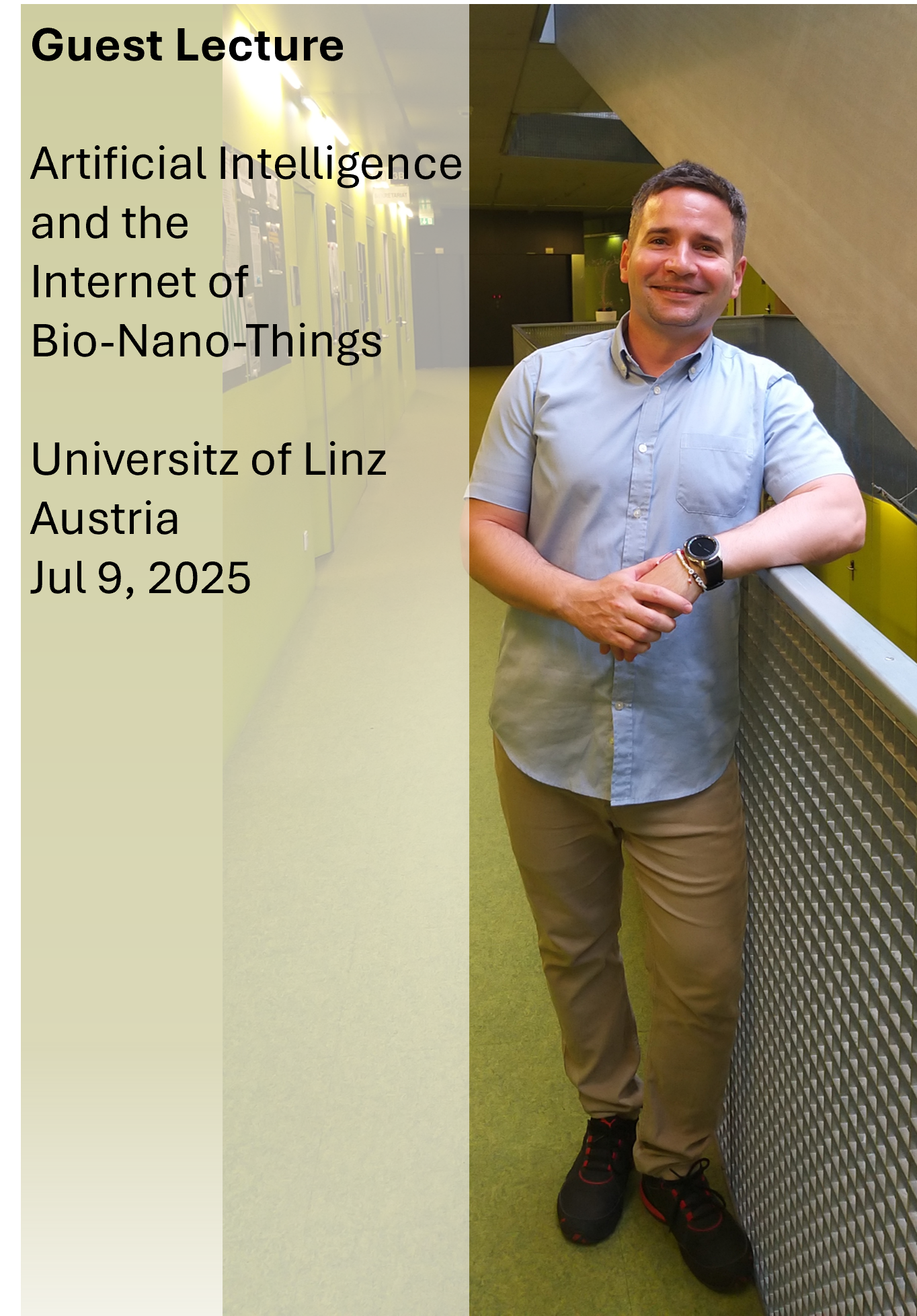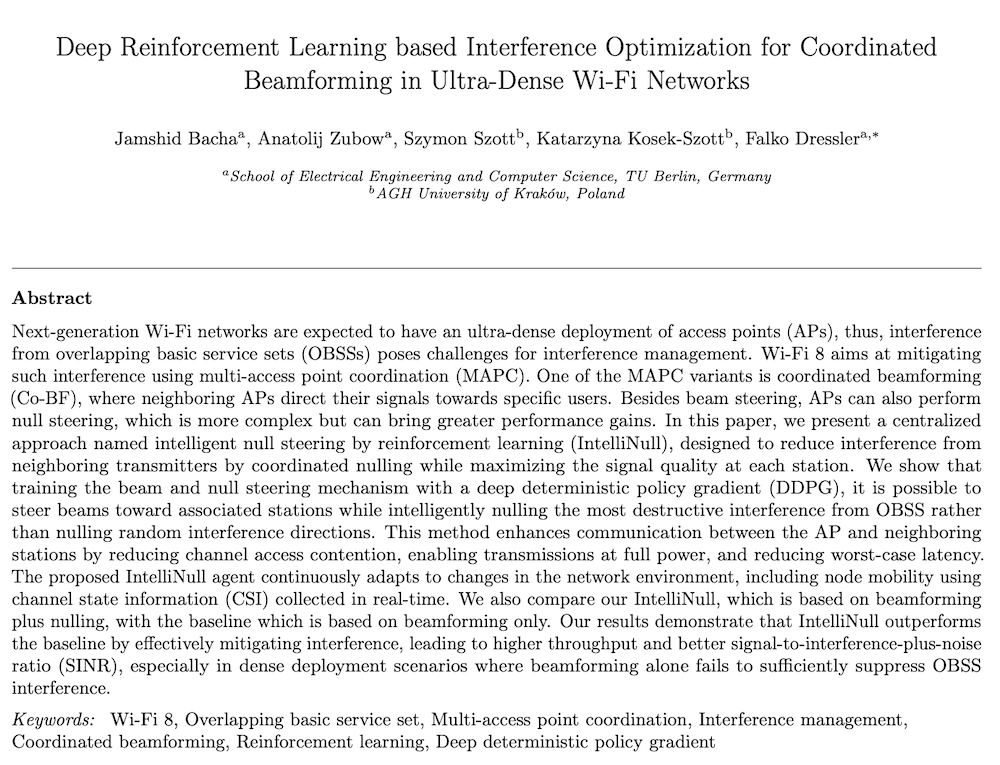Literature Database Entry
zubow2022grgym
Anatolij Zubow, Sascha Rösler, Piotr Gawłowicz and Falko Dressler, "GrGym: A Playground for Research on RL/AI Enhanced Wireless Networks," Proceedings of European Wireless (EW 2022), Dresden, Germany, September 2022.
Abstract
The provision of a wide range of services each with different requirements makes next generation wireless networks become more complex and heterogeneous which is aimed to be tackled through network softwarization and the application of Artificial Intelligence (AI)-based methods. Specifically, AI methods based on Deep Reinforcement Learning (RL) became very popular as they enable closed-loop end-to-end network optimization even of complex and heterogeneous wireless networks. However, for early deployments there is a pressing need for well-defined environments so that deep RL-based solutions can be studied. We present GrGym, a software framework for the development of deep RL enhanced wireless networks, with a specific focus on its usage in experimental 5G/6G research. It is based on the OpenAI Gym toolkit and the flexible GNU Radio platform. With GrGym, deep RL-based solutions for 5G/6G networks can be trained in simulated environments as well as real-world testbeds using software-defined radios.
Quick access
Authors' Version ![]() (PDF on this web site)
(PDF on this web site)
BibTeX ![]()
Contact
Anatolij Zubow
Sascha Rösler
Piotr Gawłowicz
Falko Dressler
BibTeX reference
@inproceedings{zubow2022grgym,
author = {Zubow, Anatolij and R{\"{o}}sler, Sascha and Gawłowicz, Piotr and Dressler, Falko},
title = {{GrGym: A Playground for Research on RL/AI Enhanced Wireless Networks}},
publisher = {VDE},
address = {Dresden, Germany},
booktitle = {European Wireless (EW 2022)},
month = {9},
year = {2022},
}
Copyright notice
Links to final or draft versions of papers are presented here to ensure timely dissemination of scholarly and technical work. Copyright and all rights therein are retained by authors or by other copyright holders. All persons copying this information are expected to adhere to the terms and constraints invoked by each author's copyright. In most cases, these works may not be reposted or distributed for commercial purposes without the explicit permission of the copyright holder.
The following applies to all papers listed above that have IEEE copyrights: Personal use of this material is permitted. However, permission to reprint/republish this material for advertising or promotional purposes or for creating new collective works for resale or redistribution to servers or lists, or to reuse any copyrighted component of this work in other works must be obtained from the IEEE.
The following applies to all papers listed above that are in submission to IEEE conference/workshop proceedings or journals: This work has been submitted to the IEEE for possible publication. Copyright may be transferred without notice, after which this version may no longer be accessible.
The following applies to all papers listed above that have ACM copyrights: ACM COPYRIGHT NOTICE. Permission to make digital or hard copies of part or all of this work for personal or classroom use is granted without fee provided that copies are not made or distributed for profit or commercial advantage and that copies bear this notice and the full citation on the first page. Copyrights for components of this work owned by others than ACM must be honored. Abstracting with credit is permitted. To copy otherwise, to republish, to post on servers, or to redistribute to lists, requires prior specific permission and/or a fee. Request permissions from Publications Dept., ACM, Inc., fax +1 (212) 869-0481, or permissions@acm.org.
The following applies to all SpringerLink papers listed above that have Springer Science+Business Media copyrights: The original publication is available at www.springerlink.com.
This page was automatically generated using BibDB and bib2web.







